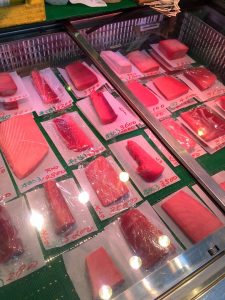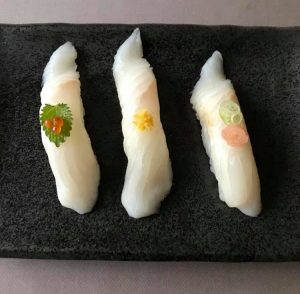 The Japanese have some strict rules for handling fish. On the cooking class I teach I follow the Japanese rules which are more strictly than the Danish rules. I do this for the health of the students.
The Japanese have some strict rules for handling fish. On the cooking class I teach I follow the Japanese rules which are more strictly than the Danish rules. I do this for the health of the students.
It does matter how fish are stored.
All fish species have their own bacteria and to prevent the different bacteria from being transferred to each other it is best to keep fish separate.
In Japan, it is not enough that the different fish are kept separate. They are also wrapped in tightly closed films so that the fish do not dry out.
It is also important keep the fish cold all the time unless they are used in the preparation of sushi.
At Sushi course for beginners I talk more about handling fish for sushi.
_
Zoë has held sushi courses and cooking classes for A. P. Moller – Maersk, Hugo Boss Nordic, Novo Nordisk, Novartis, Velux, Gorrissen Federspiel, Beierholm revision, Elbek & Vejrup and many more.









